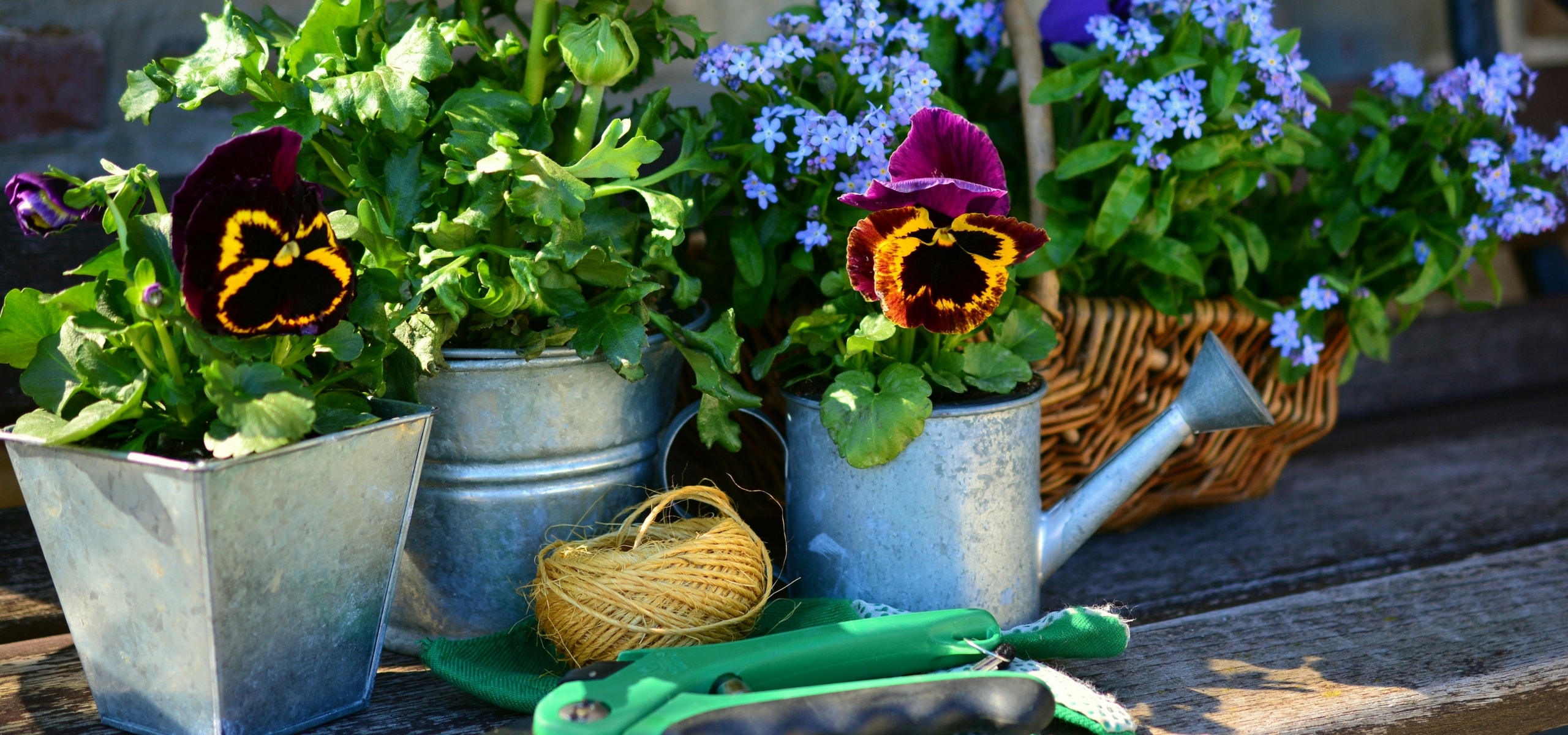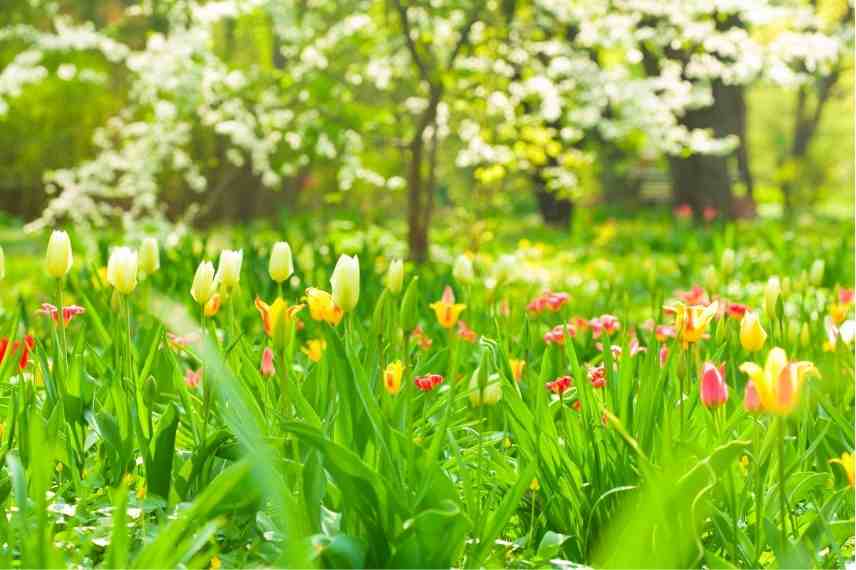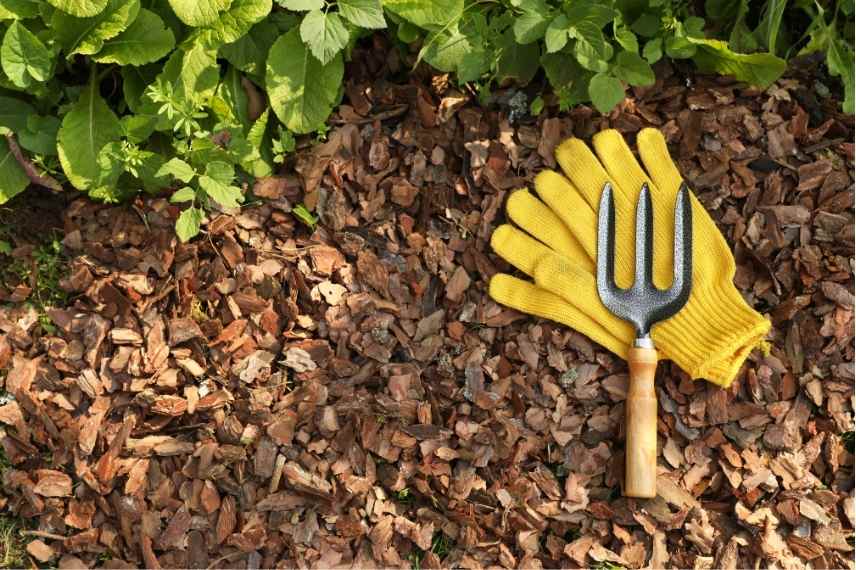
Each season has its gardening
Garden Work Calendar
Contents
Welcome to our seasonal gardening guide! To achieve a lush and healthy garden, it is important to know when and how to carry out various gardening tasks. In this article, we provide you with practical tips on the work to be done in the garden for each time of the year, from early spring to winter. So, get your gardening tools ready and prepare to discover how to care for your garden throughout the year!
The "first spring": from 1st February to 21st March
When nature awakens, it’s time to clear the ground and start planting as soon as possible. As vegetation prepares to come back to life, a thorough clean-up is essential: weeding and staking the beds, finishing the pruning of trees with the branch cutter, shrubs and roses with the pruning shear, and cutting back the last grasses and perennials with the shear. Pruning roses is best done as soon as the buds appear. Fruit trees, except for stone fruits which should be pruned in summer, need to be pruned before their spring regrowth.
- Now is the time to aerate the soil in the beds with a aerating fork, weed with a weeding fork or a knife, and incorporate some fertiliser. Choose a formula that is not too high in nitrogen. Eliminate seedlings of cardamine and senecio that can reseed very quickly. Pamper your short grass meadow by eradicating moss with a scarifier and aerating it to achieve a beautiful carpet.
- Define your lawn edges using a spade or a well-sharpened half-moon.
- You can already make flower sowings, vegetables and dare to plant the hardiest annuals like lavatera, cornflower, and poppy. Add flowering biennials (pansies, primroses) that will join the early blooms of hellebores or witch hazel.
- A simple fleece will protect your seedlings from the last frosts. Deter hungry gastropods with organic pellets made from iron. As soon as the weather improves, remove the fleeces and protections to avoid rot.
- Do not plant your camellias in the morning sun, as they may suffer in winter from sudden temperature changes. Do not allow snow to accumulate on their leaves; shake it off to prevent the leaves from scorching.
- Paint the trunks of fruit trees with ” lime wash ” to prevent the spread of insects and diseases.
Read also
Best melliferous plants by seasonTrue spring: from 15 March to 22 May
- Weed regularly to prevent them from seeding and potentially forever contaminating the garden. Hoe in hot weather and dry soil to eradicate them. Take care of the edges of your ponds, where weeds grow particularly quickly.
- Start the first mowings of the lawn, followed by a specific fertiliser with each mowing.
- Gradually remove the winter protections before they prevent the plants from regrowing.
- Plant hardy plants: perennial plants, climbing plants, trees, and bushes, especially heather varieties that can be planted in bloom.
- You can plant your herbs in warm soil and in the sun, such as parsley, chervil, and mint, which prefer cooler conditions.
- At the end of the frosts (mid-May, after the ice saints), it’s the right time to plant fragile annuals (geraniums, impatiens, petunias), as well as your pots and window boxes. Make sure to place them in partial shade and sheltered to gradually acclimatise the plants to the outdoors and the sun. For extra precaution, protect them with a simple forcing net.

The beginning of summer
It’s time to think about maintenance and care before the scorching summer days arrive.
- To encourage abundant and prolonged flowering, remove faded flowers and unnecessary fruits with a pruning shear.
- Loosen the soil with a hoe and water in anticipation of restrictions that may be imposed in certain areas. You can install an automatic watering system to save water: a network of porous pipes or drip irrigation. Spread a generous mulch on bare soil.
- On terraces or balconies, also plan for an automatic watering system and complement it with a surface mulch. For hanging baskets, use water-retaining granules at planting, combined with slow-release fertiliser. Remember to incorporate some decorative foliage plants into your beds and pots to enrich your compositions.

High summer
Watering “in the cool” is an opportunity to detect insects and diseases before they spread too much.
- Don’t hesitate to prune and sacrifice overly cumbersome branches. The grass may dry out, but that’s not a problem; it will recover after the autumn rains.
- Also remember to prune with a pruning shear the non-perpetual roses (climbing or bush varieties) to encourage a beautiful flowering next year. To keep the clumps nice and compact, prune the lavenders with a shear as soon as they have finished flowering. If you are overrun with bindweed, you can tackle it with a specific weedkiller spray that targets moss.
- From late August to early September, it will be time to propagate, by layering, plants with “Augusted” stems, which means firm at their base, to avoid the risk of rot. This particularly applies to roses, fuchsias, penstemons, and geraniums.
- From September onwards, you can divide the clumps of herbaceous peonies and replant them in still warm soil, without burying their collar.
- Watch for a lack of oxygen in ponds, which leads to the appearance of unsightly algae that need to be regularly removed. Use some oxygenating foliage plants to quickly regulate the biological balance.
- Take advantage of summer for masonry work, when the soil is dry and therefore stable. It’s a good time to undertake the construction of a pond, a pergola, or a terrace.
The beginning of autumn
When the beginning of autumn resembles an Indian summer, continue watering, avoiding the foliage to limit the risk of powdery mildew development.
- Now is the time to propagate certain tender plants such as geraniums, bushes, and hydrangeas in particular.
- You can plant spring-flowering bulbs, such as tulips, hyacinths, crocuses, daffodils, and fritillaries.
- Autumn offers the opportunity to produce rich homemade compost. Gather the fallen leaves, mow the grass to collect the leaves that have fallen on the short grass meadow. The resulting mixture is ideal for transforming into humus. Mix well, ensuring that the pile is neither dry nor soaked. Cover with a black tarp to activate fermentation. In spring, mix again. Your compost will be ready to use by the following autumn.

Full autumn
The transformation of the landscape is spectacular: the vegetation turns red, garnet, purple, and orange-yellow. This alchemy never reproduces in the same way; it depends on temperature ranges, humidity, rainfall, and wind.
- It’s the time for chrysanthemums, but many other perennials remain. Even faded grasses retain their charm. Keep the most decorative ones; they will fill the beds during winter.
- It’s the time to plant as long as it doesn’t freeze, especially woody plants. “At Saint Catherine, all wood takes root.” You can plant roses, flowering shrubs, fruit trees, and deciduous or evergreen trees. Facilitate their recovery by soaking their roots in a mixture of soil and water before planting. Remember to stake them securely.
- Don’t hesitate to also flower balconies and terraces. Install shrubs, perennials like heathers, and flowering plants like chrysanthemums or cyclamen. Consider ornamental cabbages whose foliage colours under the effect of frost. Be careful, don’t forget to protect your tender plants. Most often, a thick layer of fallen leaves around the base will do the trick. Otherwise, wrap your more delicate plants in a winter cover.
Winter
The heart of winter is the time to clear the flower beds, borders, trees, bushes, and roses.
- It’s the right time to reshape the silhouette of certain trees that have become too dense or imposing. Based on our memories from last year, we can devise new plans: creating new borders to be marked out on the ground, transplanting poorly placed plants, outlining a new perspective, and setting up new structures (pergola, arch, fence).
- Avoid walking on the frozen short grass meadow, ensure the protection of frost-sensitive plants, mark with stakes the water feature that disappears under ice or snow, and remove snow if it bends branches or risks damaging the plantings.
- It is recommended to protect the trunks and branches from rabbits or deer in search of food.
- Remember to carry out winter treatments in orchards against larvae and diseases before the vegetation awakens from its slumber and starts to grow again.
- Take advantage of the thaw to spread manure or compost that you will incorporate with a garden fork.
- Make your sowings of trees and bushes with tough seeds in trays with fine mesh to protect them from rodents.
- When the weather is too bad, it’s the time to assess your equipment: sharpening, servicing the mower, maintaining tools, so you can work efficiently as soon as the nice days return.
- Subscribe!
- Contents






























